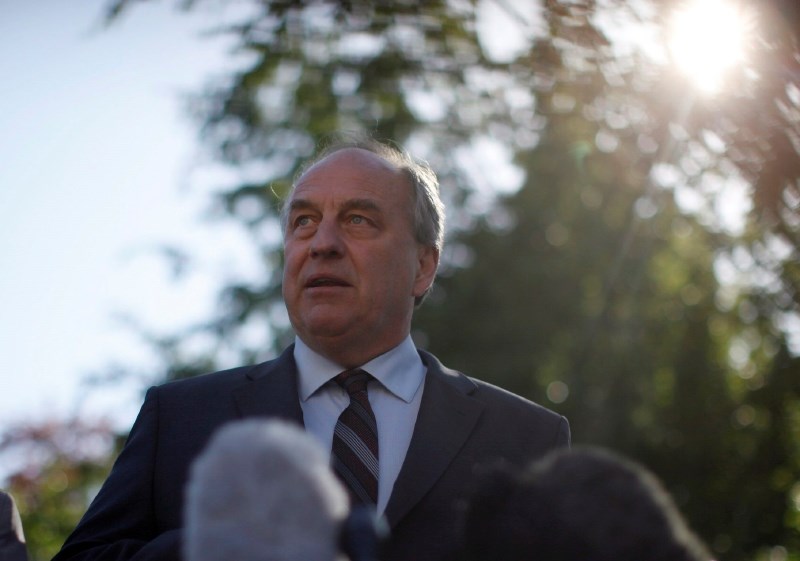The B.C. Green Party is “very, very close” to reaching a deal to prop up either the B.C. Liberals or B.C. NDP in a minority provincial government, Green Leader Andrew Weaver said Friday.
In an update for reporters at the B.C. legislature, Weaver said the party had productive meetings with both parties this week and remains on course to announce a pact before the election period officially ends on Wednesday.
“We’ve promised to give people certainty and we will give them certainty,” he said. “That has been our goal all along and we’re very, very close with both the B.C. Liberals and the B.C. NDP.”
Weaver has acknowledged previously that the NDP and Green positions are closer on key issues such as banning big money from B.C. politics, changing the electoral system and opposing the Site C dam and Kinder Morgan pipeline expansion.
But, on Friday, he said the Greens share issues in common with both the Liberals and NDP and gave no indication which way the Greens might be leaning.
“There is so much commonality of so many issues amongst all three parties,” he said. “It’s remarkable that we don’t do more things together here.”
He confirmed that the Greens are seeking a long-term arrangement with one of the parties that will allow a minority government to remain in place for an extended period.
The Liberals have 43 seats to 41 for the NDP and three for the Greens. A Liberal-Green alliance would offer more stability with 46 of 87 seats in the legislature, while an NDP-Green pact would have a bare 44-seat majority.
Still, Weaver expressed confidence that an NDP-Green government could survive for a lengthy period despite its slim vote advantage.
“There’s no reason why it can’t last four years,” he said.
He admitted, however, that negotiations between the parties are “extremely complex.”
“It’s not just about picking the B.C. NDP or picking the B.C. Liberals,” he said. “It’s about trying to ensure that we have stability.”
He noted, for example, that the parties have to work out how they would appoint a Speaker, which usually comes from the government benches. In the case of a 44-seat NDP-Green government, that would leave 43 MLAs on the government benches and 43 Liberal MLAs on the Opposition side and require the Speaker to break all ties.
“The Speaker has a tradition — a long and rich tradition — of siding with government to ensure that progress continues,” Weaver said. “So any vote that was a tie, the Speaker would side with government. It would be a constitutional crisis if the Speaker overruled that.”
He said it’s crucial for the Greens to show that a minority government can work, because the party favours changing the electoral system to proportional representation, where such scenarios would be more common.
“You can’t really, on the one hand, campaign and say that you know that you can make proportional representation work if you can’t make a minority government work,” he said. “So for us it’s very important to ensure that we can demonstrate to British Columbians that a minority government can work.”
Weaver said staff for all three parties will continue to negotiate through the weekend. He expects to rejoin talks Monday, if not sooner.



